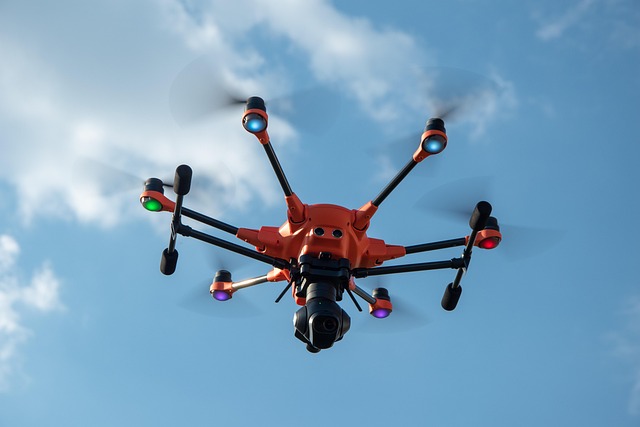3D reconstruction for diagnostics has revolutionized dental and maxillofacial surgery by providing detailed visual representations of oral structures, enabling precise treatment planning, identifying pathologies missed by 2D imaging, and enhancing patient outcomes. This technology uses advanced scanning methods to create 3D models, empowering healthcare providers with comprehensive insights for complex procedures like implant surgeries and orthodontic treatments. In modern practices, it facilitates effective communication, builds patient trust, and improves compliance with care plans. AI algorithms further revolutionize this field, promising automated diagnosis and personalized treatment planning.
“In the realm of dental and maxillofacial surgery, 3D imaging has emerged as a game-changer. This advanced technology offers a wealth of benefits beyond traditional 2D methods. From enhancing diagnostics through powerful 3D reconstruction techniques to improving surgical precision and visual communication with patients, its impact is profound. This article explores these facets, delving into the latest advancements and trends shaping the future of 3D imaging in dentistry. Discover how this technology revolutionizes patient care and treatment outcomes.”
Enhancing Diagnostics: 3D Reconstruction Techniques
In dental and maxillofacial surgery, 3D imaging has revolutionized diagnostics by providing detailed visual representations of complex oral structures. Through advanced 3D reconstruction techniques, surgeons gain unparalleled insights into the anatomy of teeth, jaws, and surrounding tissues. This enhances precision in treatment planning, enabling more accurate assessments of bone density, tooth positions, and potential pathologies that might be obscured by traditional 2D imaging methods.
The process involves capturing multiple high-resolution images from various angles using advanced scanning technologies. These images are then seamlessly merged to create detailed 3D models, offering a comprehensive view of the patient’s oral cavity. This level of detail allows surgeons to make informed decisions about complex procedures such as implant surgeries, orthognathic operations, and orthodontic treatments, ultimately improving patient outcomes.
Improved Precision: Benefits for Surgical Planning
The integration of 3D imaging technology has revolutionized dental and maxillofacial surgery, offering unprecedented levels of precision in surgical planning. By utilizing advanced scanning techniques, dentists and surgeons can obtain detailed, accurate representations of patients’ oral structures and faces. This enables them to perform comprehensive 3D reconstructions, which serve as valuable tools for diagnosing complex cases.
With 3D reconstruction for diagnostics, healthcare professionals gain a deeper understanding of anatomical relationships and potential challenges before operating. They can identify subtle anomalies, plan optimal surgical trajectories, and predict outcomes with greater accuracy. As a result, procedures become more efficient, minimizing risks and enhancing overall patient care.
Visual Communication: Showing Patients Treatment Options
In modern dental and maxillofacial practices, 3D imaging has become an indispensable tool for effective visual communication with patients. By utilizing advanced technologies like 3D reconstruction for diagnostics, healthcare providers can offer a more comprehensive understanding of oral health conditions. This allows dentists to present treatment options in a clear, visually engaging manner, empowering patients to make informed decisions.
Through detailed 3D models generated from medical scans, professionals can demonstrate the extent of issues such as tooth decay, jaw abnormalities, or facial trauma. Patients gain a deeper perception of their oral anatomy, enabling them to visualize the potential outcomes of different surgical procedures. This enhances trust in the treatment process and encourages patient engagement, ultimately leading to better compliance with recommended care plans.
Future Applications: Advancements and Trends
The future of dental and maxillofacial surgery looks bright with the continuous advancements in 3D imaging technology. One of the most promising applications is enhanced 3D reconstruction for diagnostics. This innovative approach allows dentists to create detailed, three-dimensional models of oral structures, enabling more precise planning and execution of surgical procedures. With these advanced visual aids, surgeons can better assess complex cases, identify potential issues, and develop tailored treatment strategies.
Trends suggest that integration of artificial intelligence (AI) will further revolutionize this field. AI algorithms can analyze vast amounts of 3D data, facilitating automated diagnosis, personalized treatment planning, and even predicting surgical outcomes. This not only streamlines the diagnostic process but also improves patient care by offering more effective and efficient solutions for dental and maxillofacial conditions.
3D imaging has revolutionized dental and maxillofacial surgery, offering enhanced diagnostics through advanced 3D reconstruction techniques. Its precision improvements streamline surgical planning, while visual communication tools enable better patient engagement and informed consent. Looking ahead, ongoing advancements in 3D technology promise even more innovative applications, shaping the future of oral healthcare with improved accuracy, efficiency, and patient outcomes.
